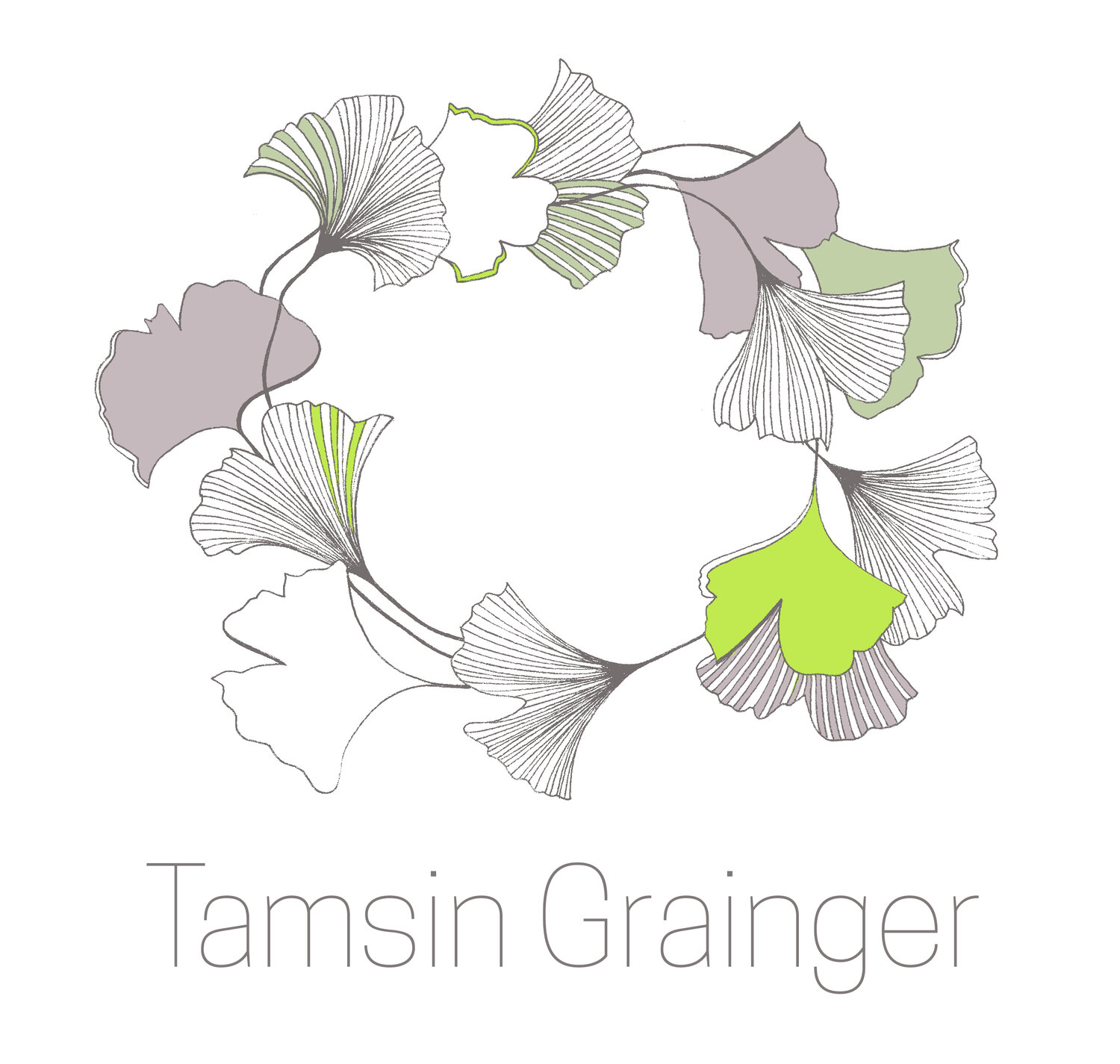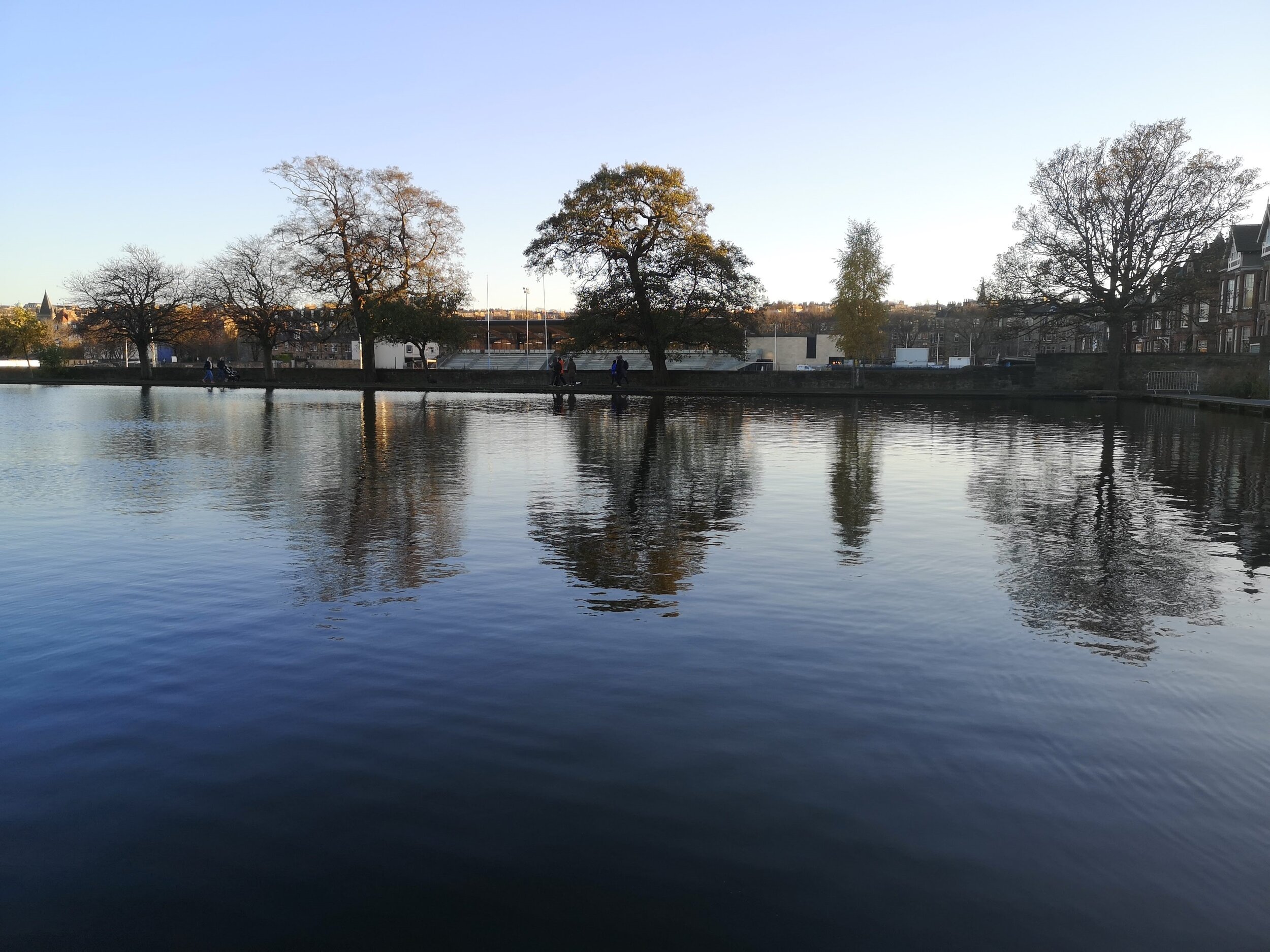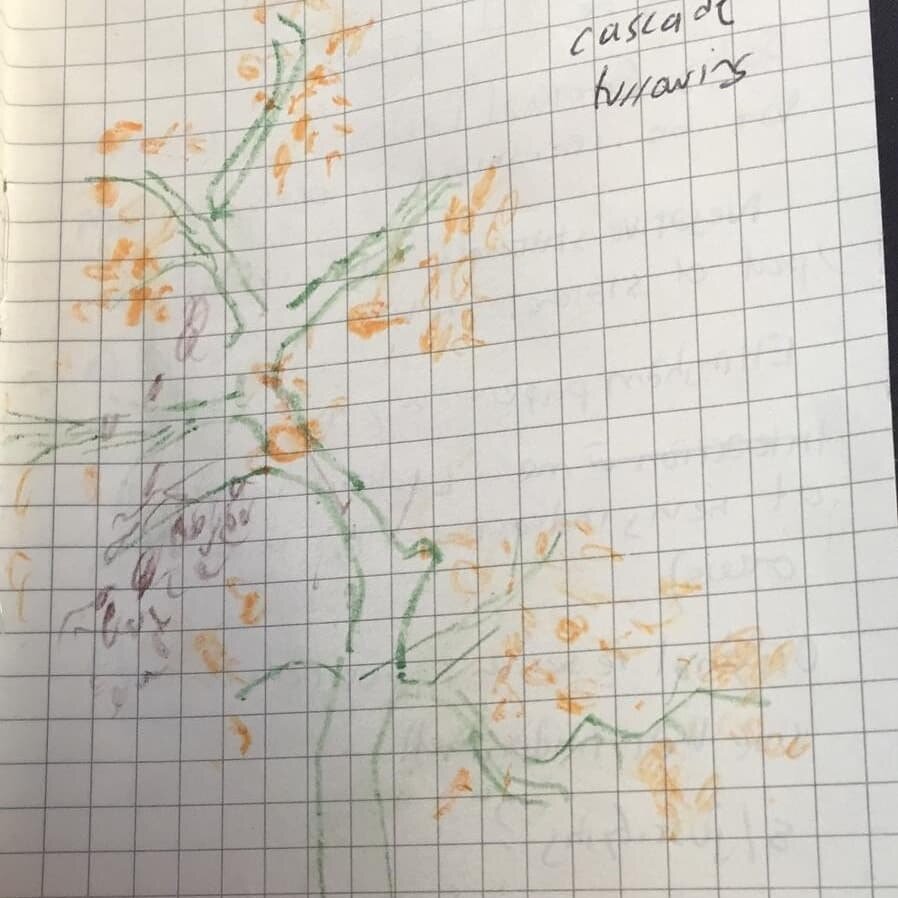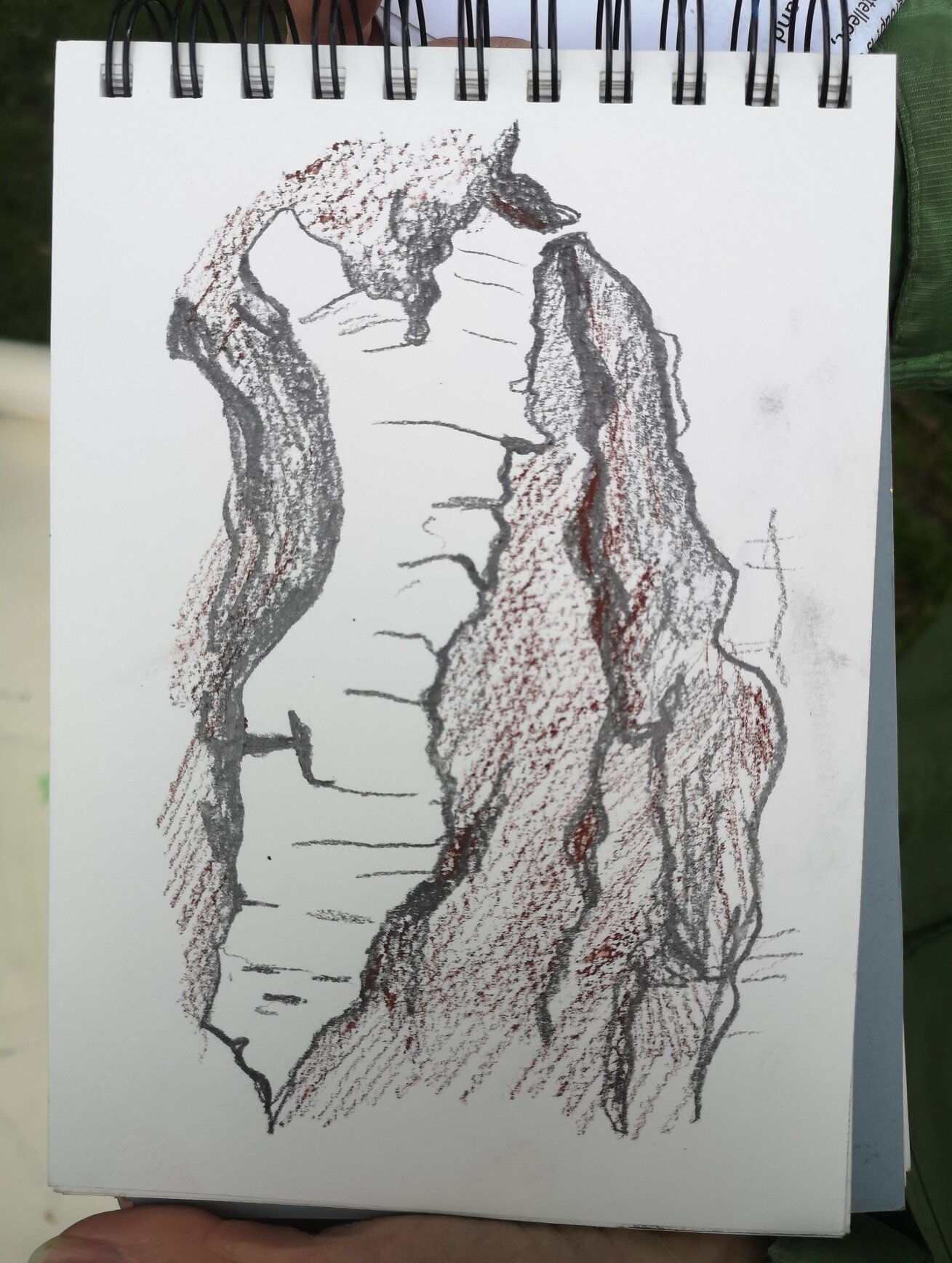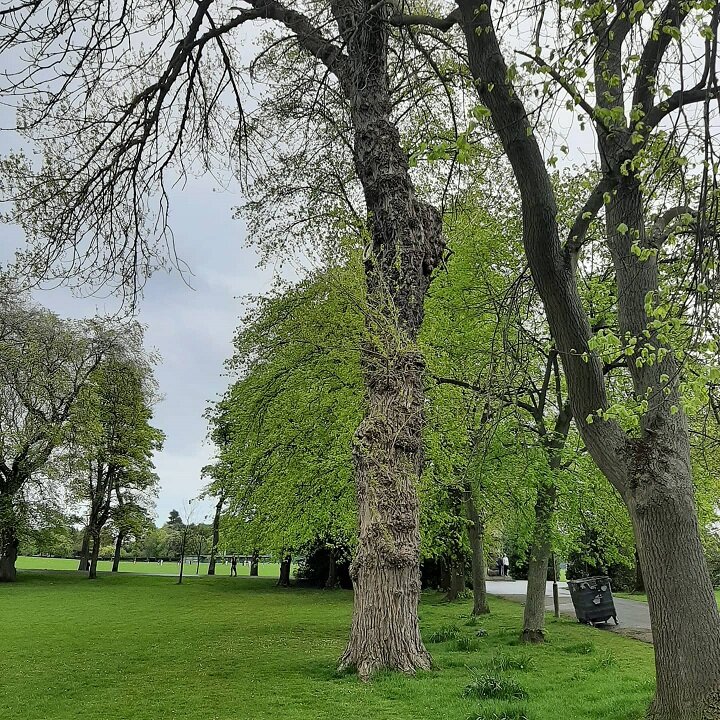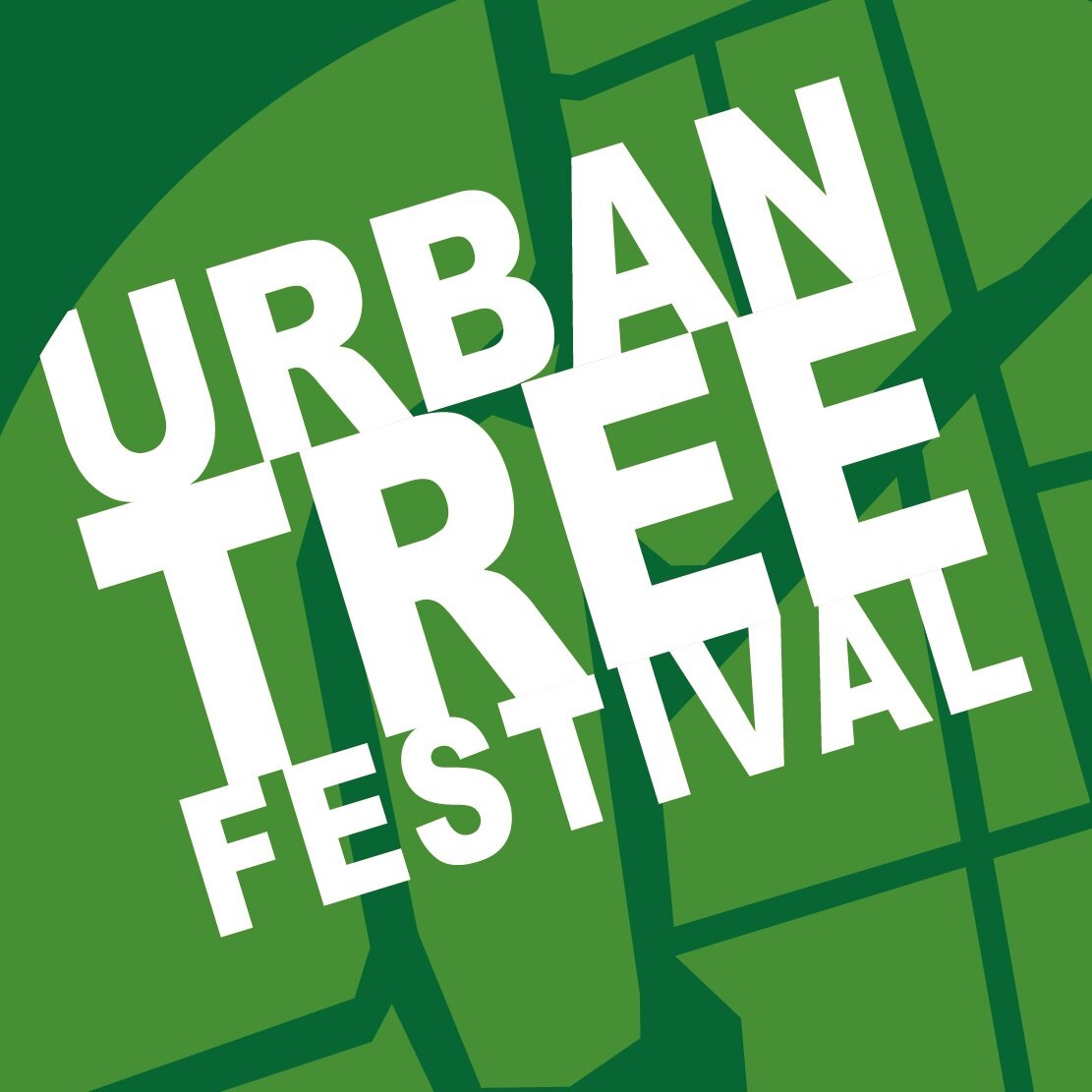What do we feel about urban trees? A psychogeographic survey.
This event has now ended, but you can still download the soundcloud walking guide for your Tree-Feeling Walk here (you must download the soundcloud app to your phone or onto your laptop to be able to do this - search for it in your google playstore or i-store.) There is also a pdf transcript: email tamsinlgrainger@gmail.com or what’s app +44 (0) 7821 264 882 and it will be sent to you for free.
The walk
We enquired into:
Our symbiosis with trees: that is, the interaction between trees and us, organisms which live in close physical association with each other to the advantage of both
Our relationship with them: that is, the way in which we are connected
How we cohabit with trees: the state or fact that we live and exist at the same time and in the same place
Our co-dependency: how we both need each other, sometimes to the detriment of the other
Our reliance: how we depend on or trust in trees and them in us
It was in two parts:
First, a walk - together or alone, wherever you are
Then, an online meet-up There was a live walk in Inverleith Park, Edinburgh; people took the walks in their own locations, some virtually and others alone or in groups; and then we all met online (see below).
Soundcloud audio walking guide for your Tree-Feeling Walk here
Age and ability: You can do this walk and the associated activities whatever your age and ability. Please adjust it to fit you and your circumstances. You may need to find a proxy to walk your route for you, directing them to certain trees and talking with them about what you are feeling.
Making a record of your tree-feelings: Throughout this walk you will be encouraged to record your tree-feelings using any medium you want. Please choose the ones you like, or want to experiment with. Further down this page you will find a list of ways to record.
The online meeting
We are part of a tree’s ecosystem. We asked: What does the tree offer us? What do we offer it? We had a conversation about this and referred to our feelings and sensations to do so.
We listened, talked to each other, and shared our tree-feelings. We started with ‘Standing Like a Tree’, a very simple chi gung exercise to root ourselves, and sat for a few moments quietly to recall our tree-time.
I gave a brief talk about the value of feelings when it comes to our respect and protection of trees. I said that it is known that if hostage takers remain unconnected to the people they are holding hostage, they can maltreat and even execute them, but if a human connection is made between the two, the likelihood of the hostages being treated better and getting away with their lives, is much higher. I posited that perhaps if those who seem able to cut down or order the clearing of ancient trees, woods and forests were to connect with their feelings about trees, identify their relationship to them and make a bond, then they may not do so again.
The overall aim of the event was
To get up close and cosy with an urban tree or trees
To find out whether and why we value them
To use our own felt, visceral, bodily experience to do this, rather than information from a book, screen or expert
To creatively broaden the remit for collecting data by using a wider variety of methods to find out their effect on us, including our sensual and personal reactions
Ways to record
Words – prose, poetry, traditional data collection methods, mind map. You can type on your phone in an email to someone you know or to the whats app or facebook group You can ask someone else to transcribe for you. You can tweet using #Treefeelingwalk and #urbantreefestival
Visual images – draw, photograph, paint, sculpt or visually depict in another way. Materials: clay, plasticine, pencil, paints, crayons, chalks, charcoal, paper, canvas
Sound – record your feelings and findings on your phone, or say them out loud to the tree or to someone else. If you don’t know where the sound recording app is on your phone, try Tools. Or you can probably download one for free
Film – video yourself speaking your feelings and thoughts, or the tree and the sounds around it
Dance
Music - sing, play a musical instrument, listen to the rhythm inside yourself or the tree and tap or drum it out (you may want to record it)
Mapping or GPS record of the route
Please note that if you want to collect found materials, please respect the tree and its natural surroundings. Don’t break parts off or remove something that another organism might need and rely on!
What to record
The tree itself: its girth, height and age - You can measure on the spot using a tape measure or a long piece of string/wool/rope that you measure when you get home. You could try pacing around it, measuring with your hands, embracing it and seeing how big the circle you make is (maybe you have to join hands with someone else). If it is tall, stand back and look up, if small stand beside it. Use metaphors! Is it ‘like’ you or someone or something else? For example, as big as a barrel, as tall as a street lamp, as small as your finger, 60 times bigger than you, as tall as that house over there, like a crane.....
Here is a pdf to help you measure and find out the age of trees pdf
http://www.newport.gov.uk/documents/Leisure-and-Tourism/Countryside/Measuring-Trees.pdf
The tree’s identification: If you want to know its scientific or vernacular name, you could try the Leafsnap app or other suitable one which can be downloaded onto your phone
Or look in a book. Here is a booklist published by the Tree Council https://treecouncil.org.uk/reading-list-our-top-tree-books/
The Area Tree Composition: Describe the geographical area where your tree is situated - note how many trees there are, how close they are to each other, write their names if you know them or do a drawing of them altogether in a group (eg 2 birch, 4 ash all about 3 paces apart, planted in holes in the pavements outside people’s houses).
Other activities
Draw a map of your walk, or download the route and mark or draw the trees on it.
In the trunk of the tree(s) you have drawn, note down a feeling that you had while you were there (don’t judge yourself, be instinctive!). Growing on and hanging from the branches, write the thoughts you had while you were there.
Compile a ‘fact’ sheet of trees in your immediate area using some of the methods above
Make a sound walk of your route and upload it to https://walklistencreate.org/ Look for Sound Walk September (the address is on the webpage
#FeelingTrees #urbantreefestival on twitter or instagram
Thanks to Ewan Davidson, the Urban Tree Festival and the 2020 contributors and presenters who inspired me, and to i-tree-eco-edinburgh.
You may like to read a flash story about the Wheatley Elm which stands in my garden here
The Urban Tree Festival website
